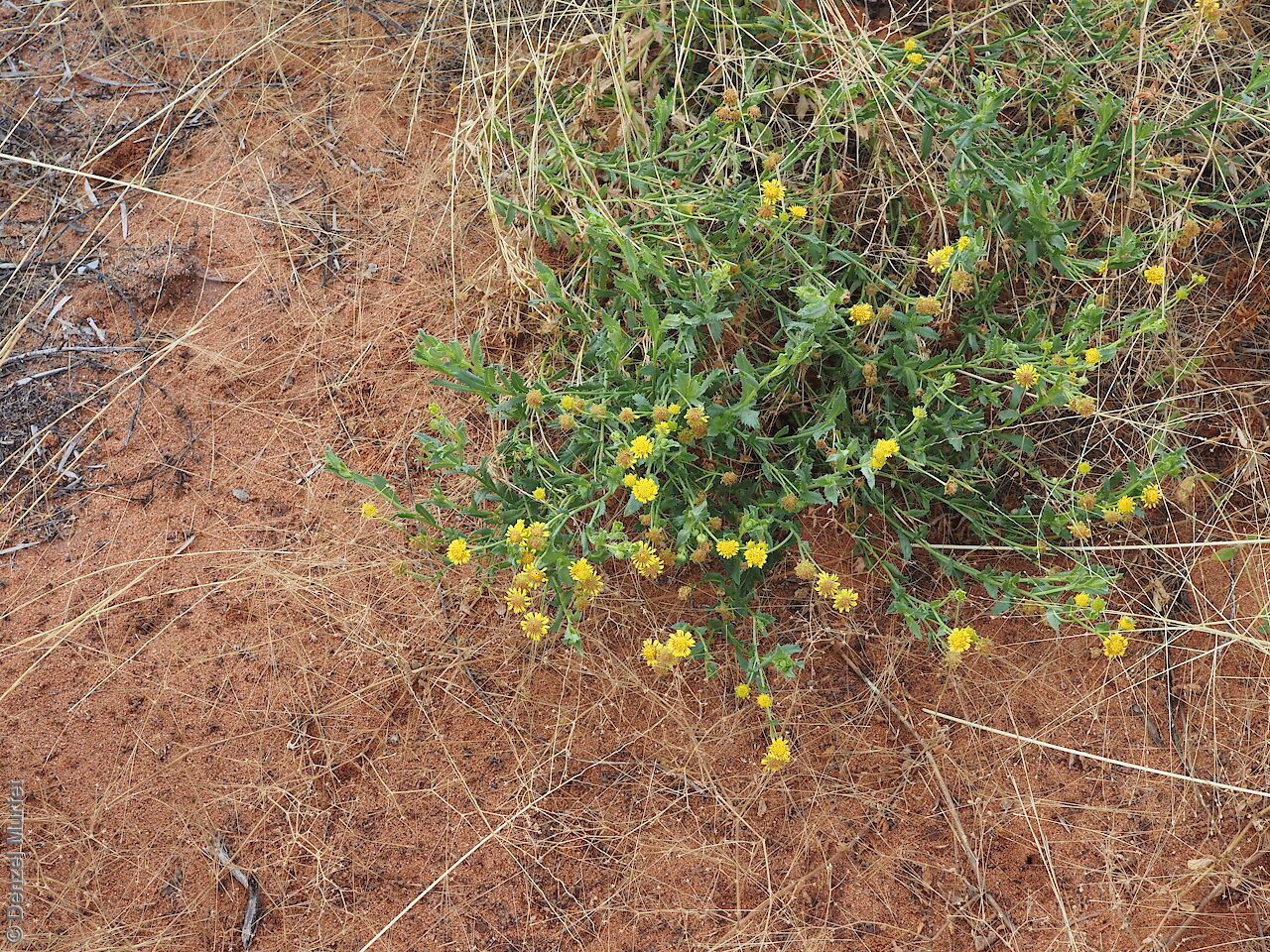
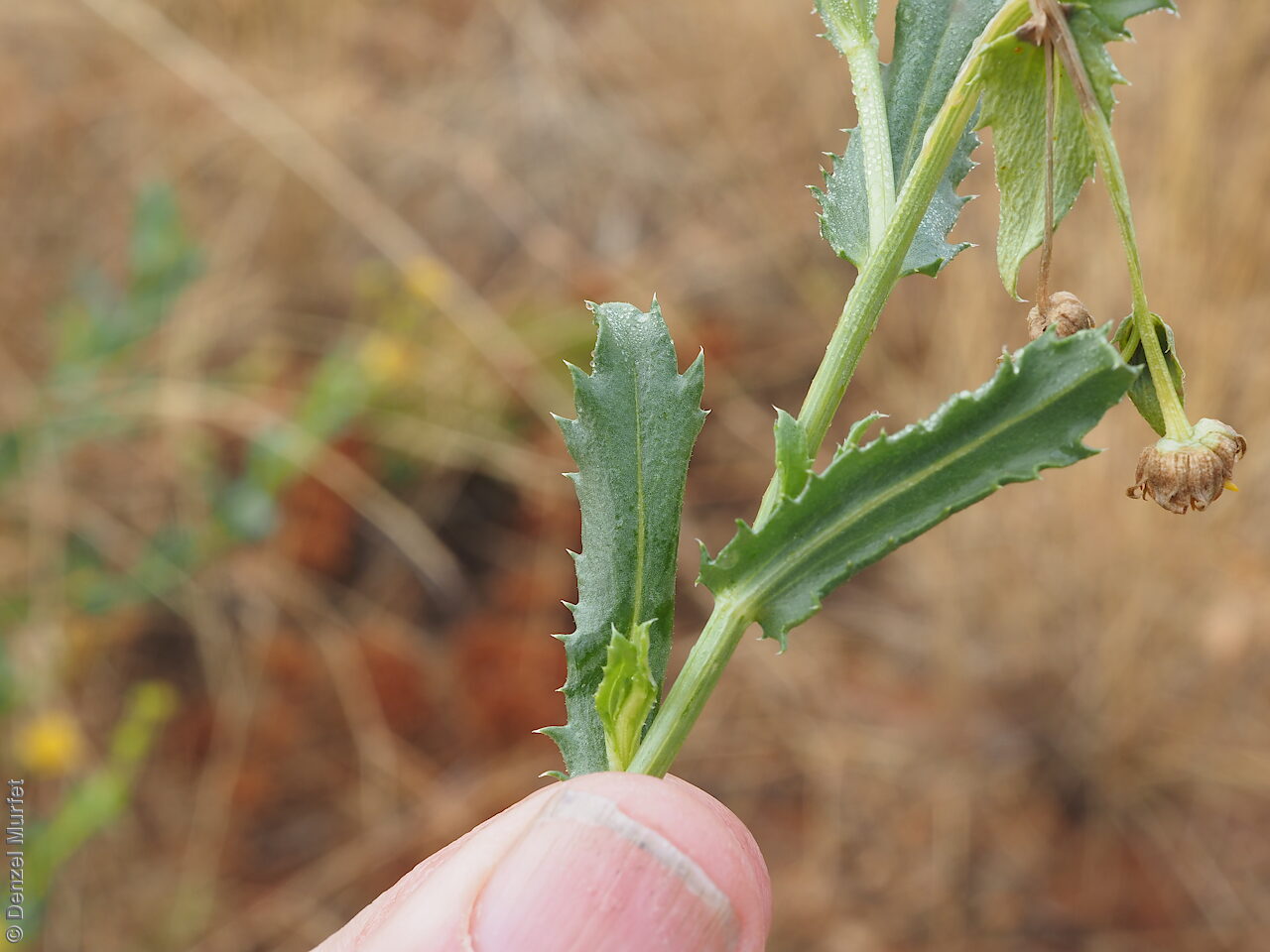
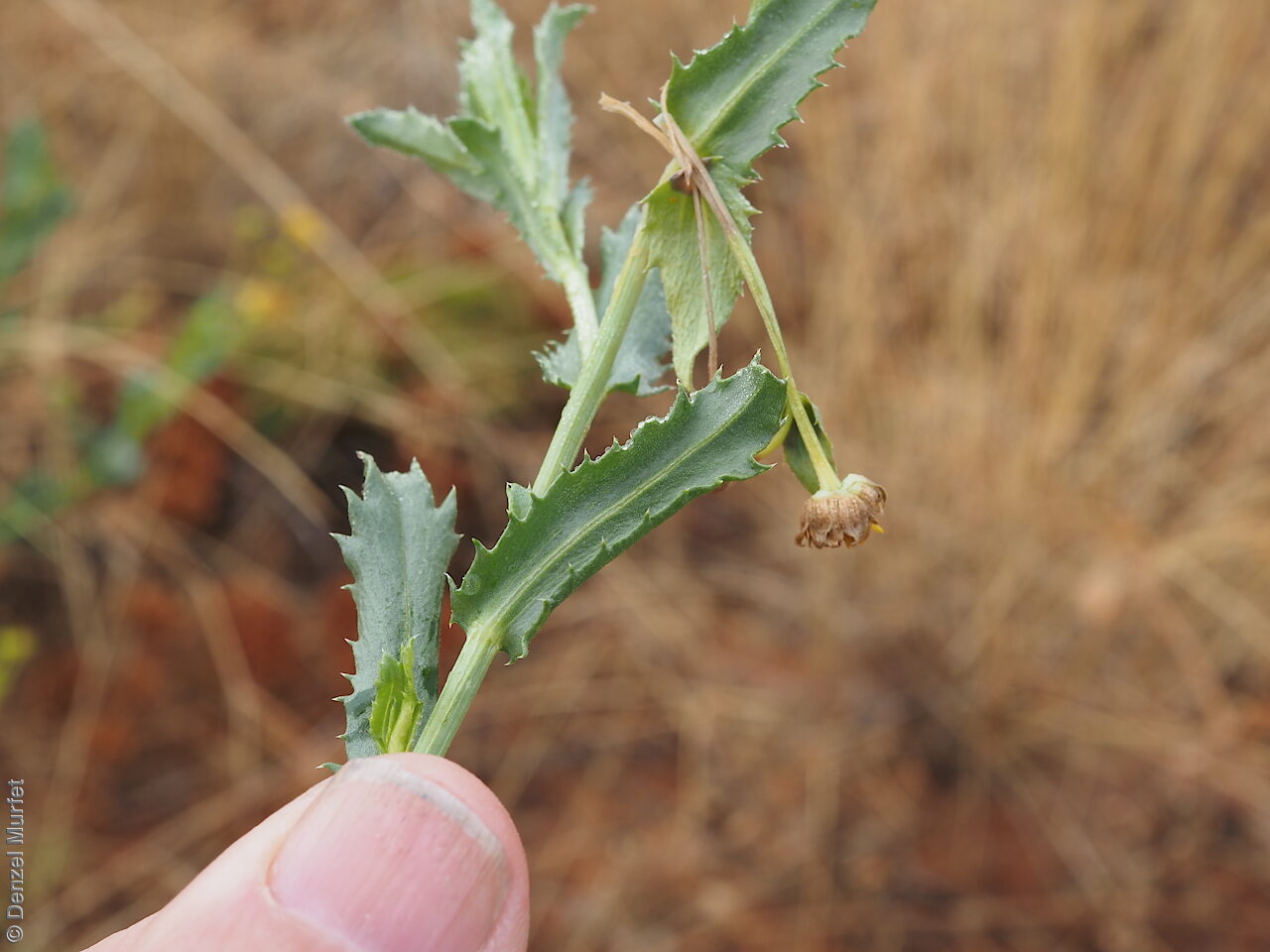
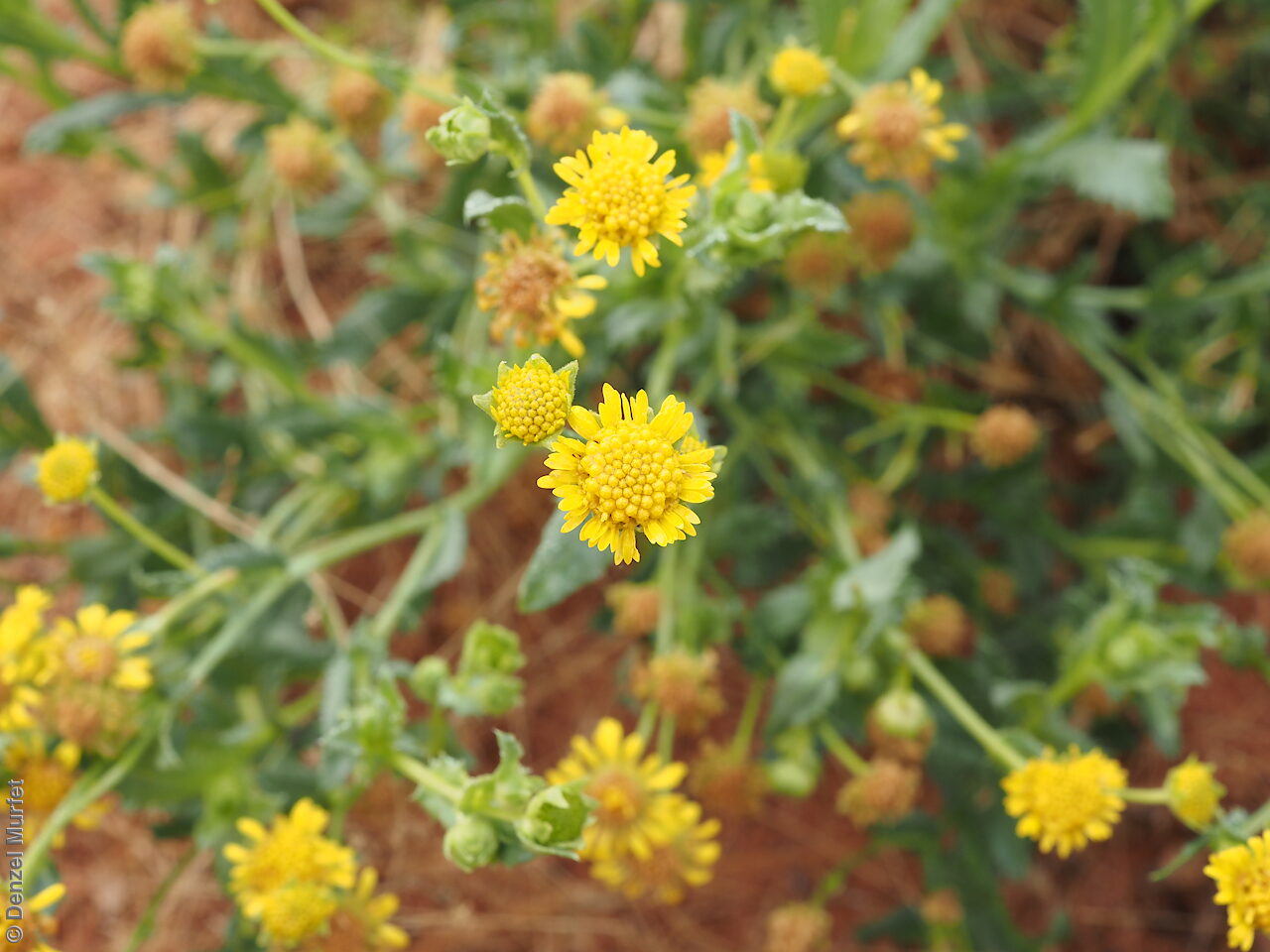
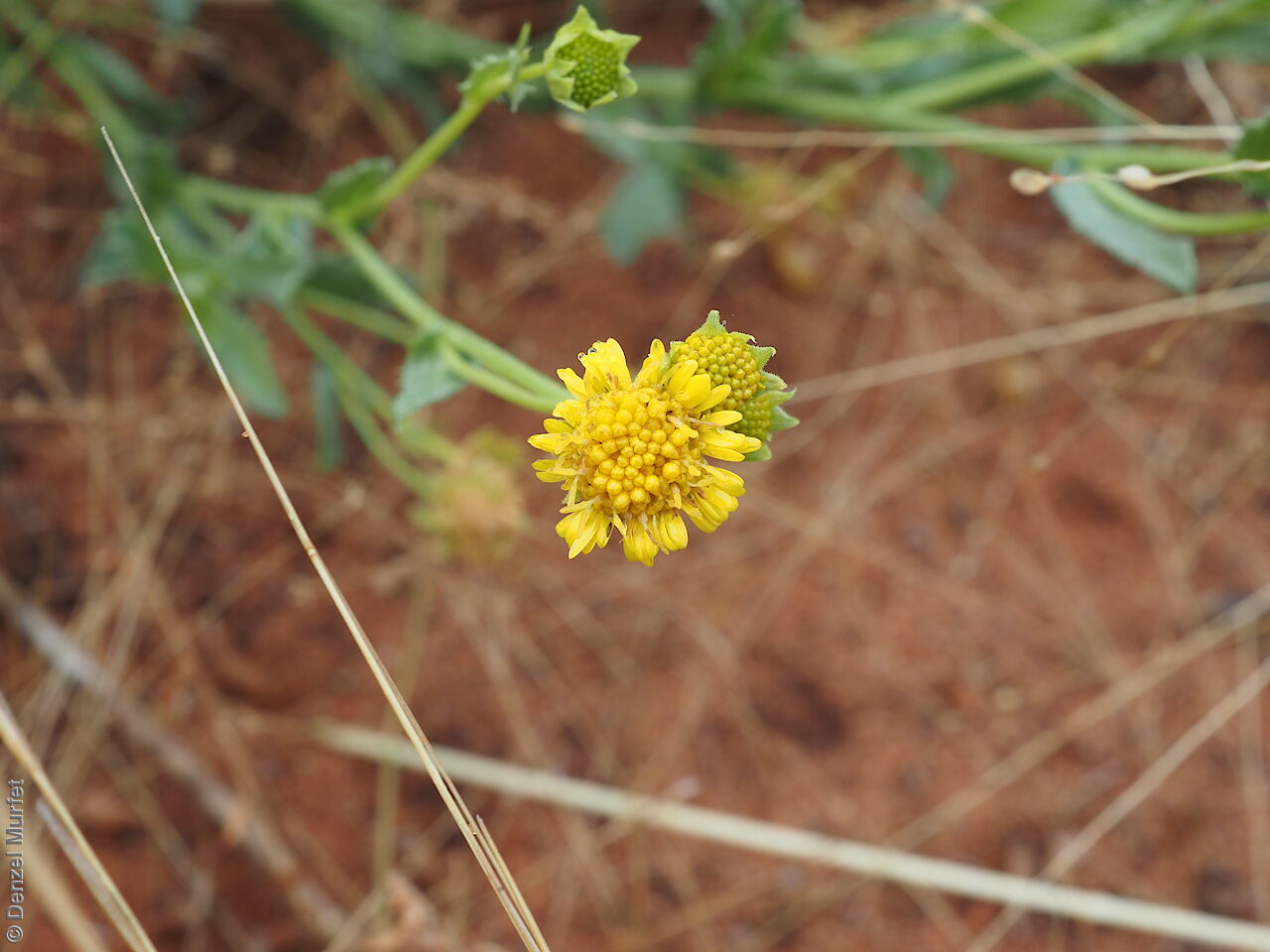
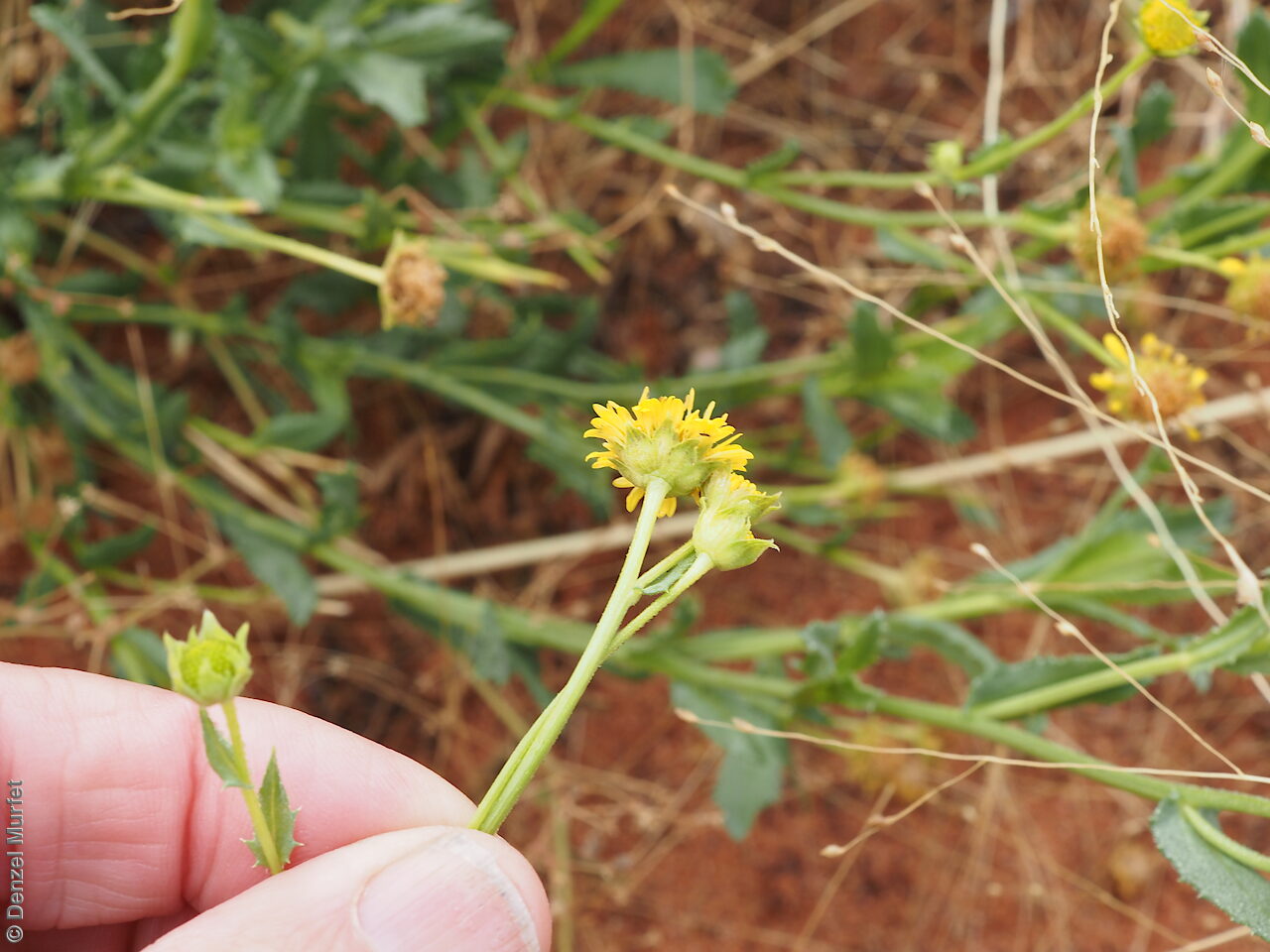
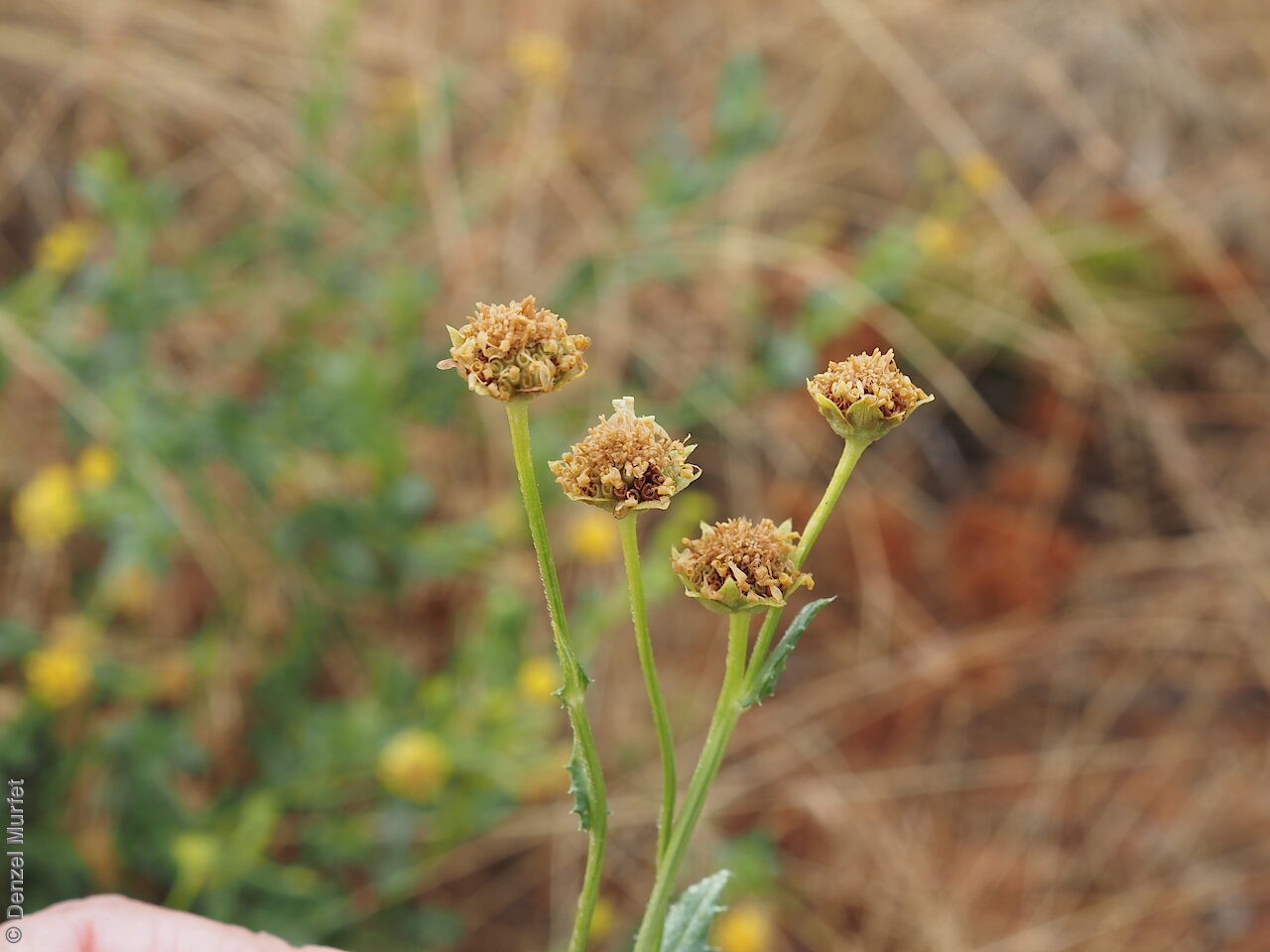
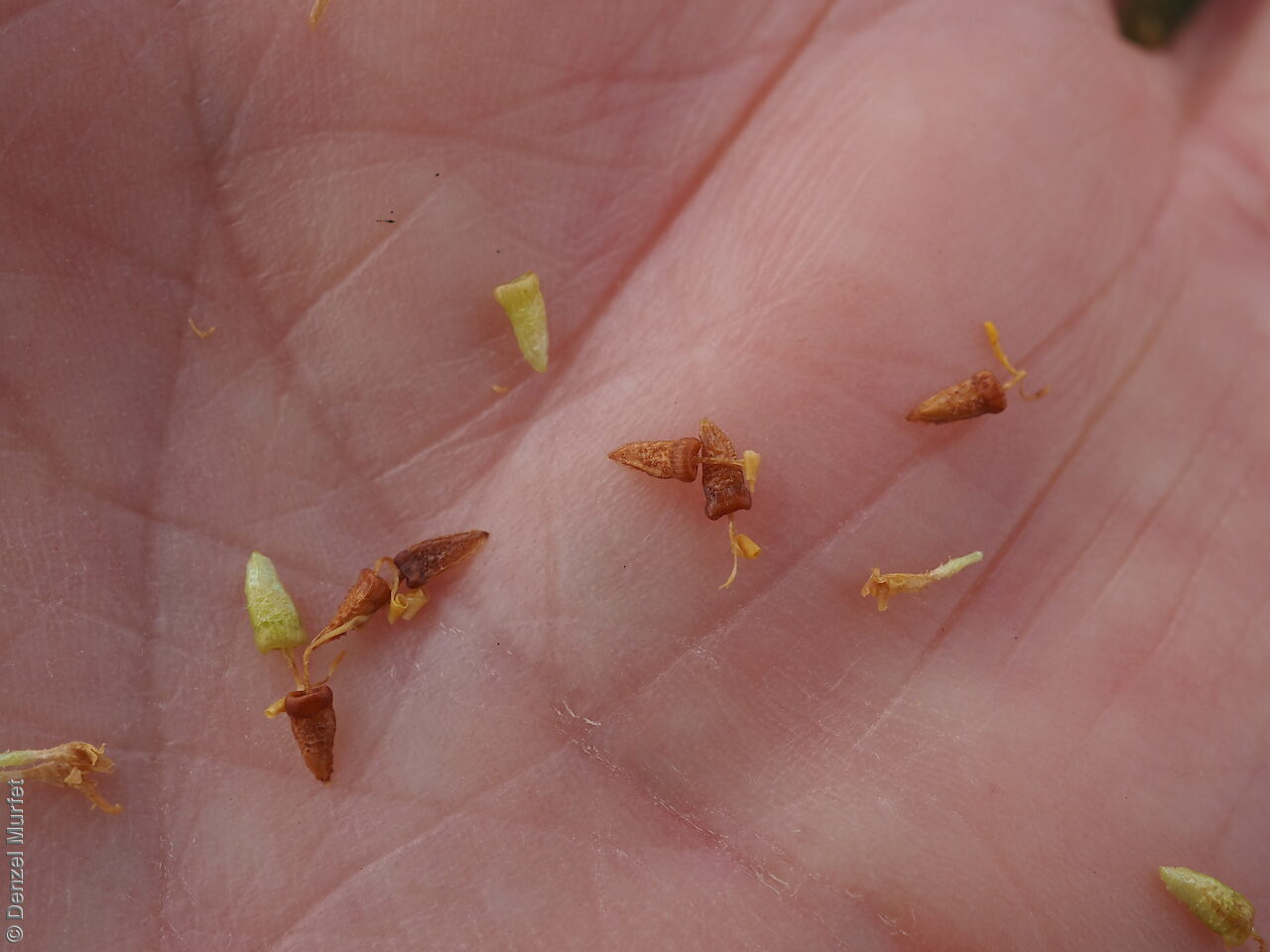
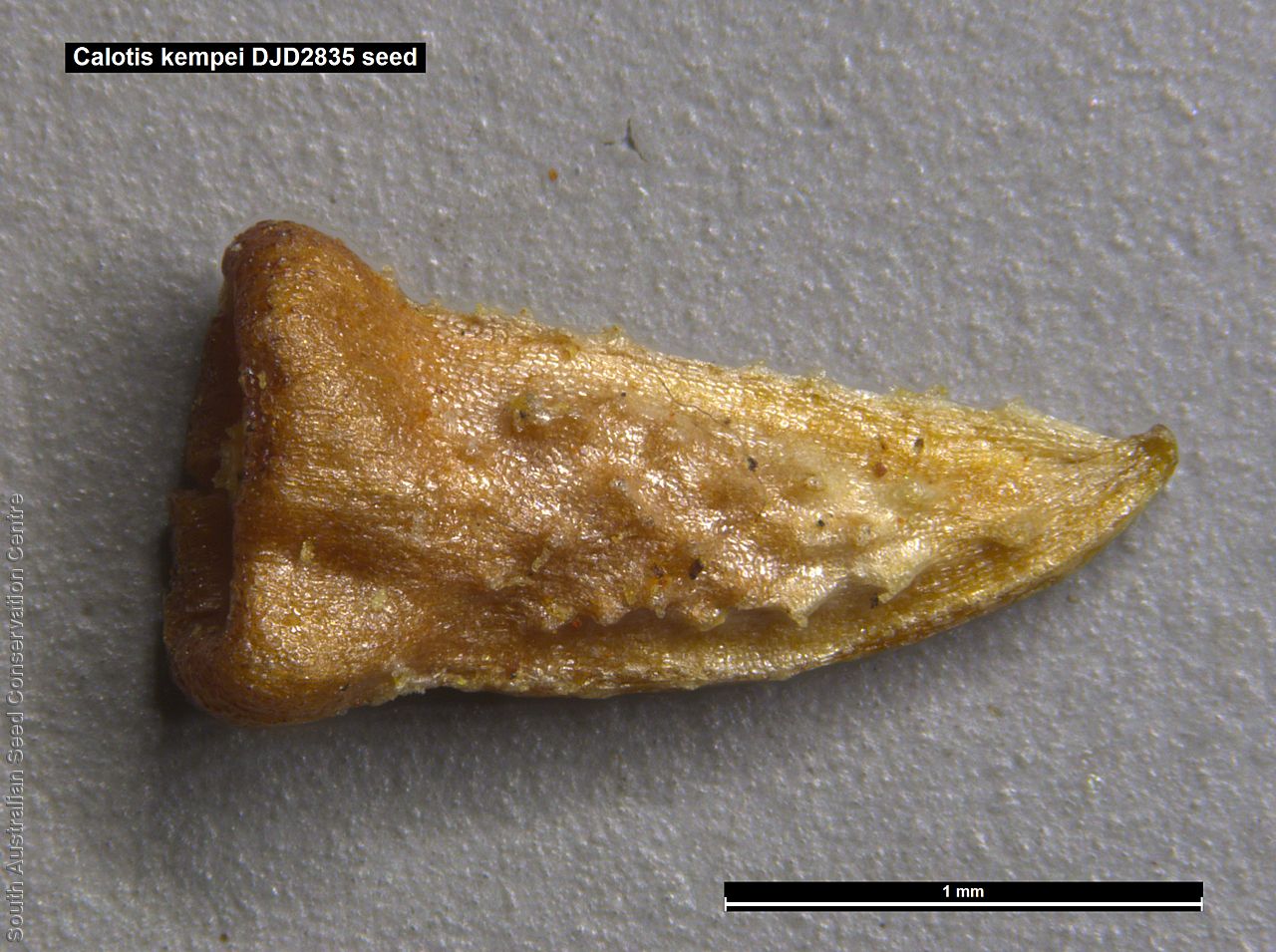
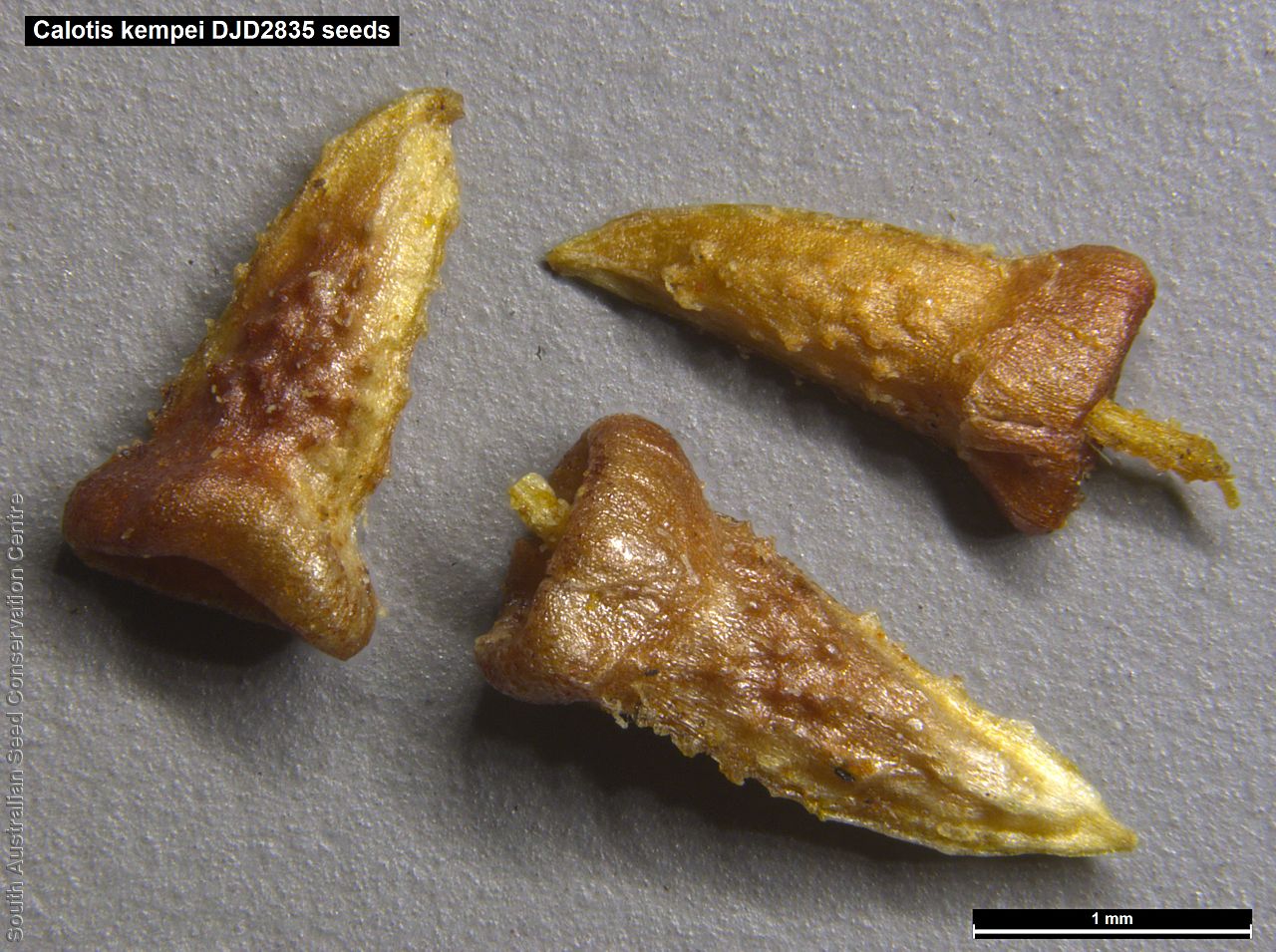
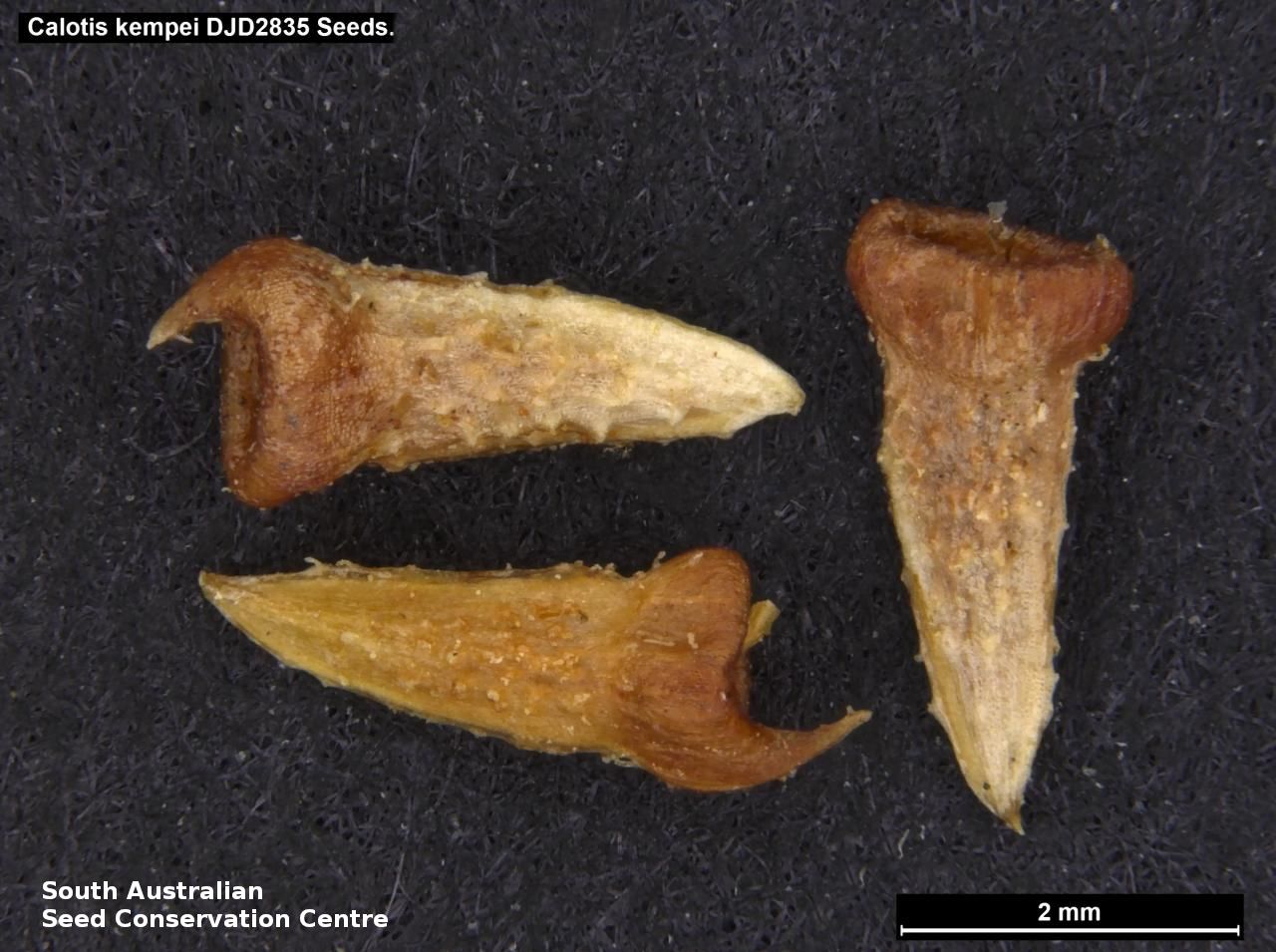

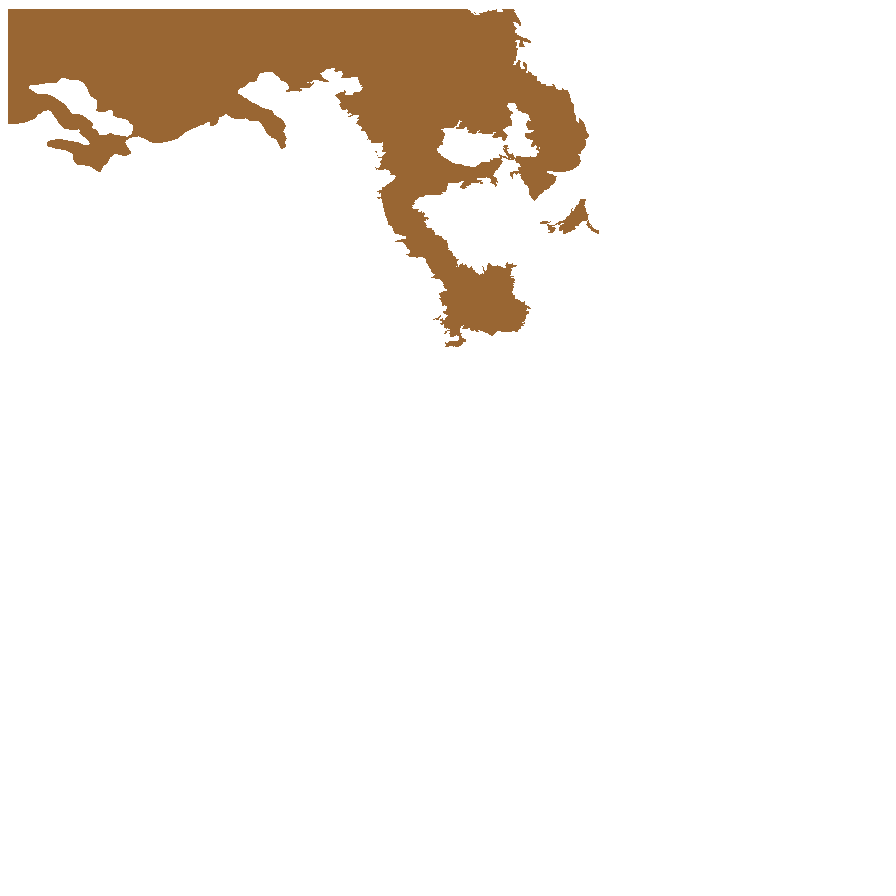
Etymology
Calotis from the Greek 'kalos' meaning beautiful and 'otos' meaning ear, after the first species named in the genus Calotis cuneifolia which has an ear-shaped pappus. Kempei named after Pastor Hermann F.A. Kempe (1844-1928), a German miner, joiner, pioneer missionary Lutheran parish pastor and plant collector.
Distribution and status
Found in the north and north-west part of South Australia, growing on dunes, creek banks and disturbed ground. Also found in the Northern Territory. Native. Uncommon in South Australia. Common in Northern Territory.
Herbarium regions: North Western, Lake Eyre
NRM regions: Alinytjara Wilurara, South Australian Arid Lands
AVH map: SA distribution map (external link)
Plant description
Perennial herb or undershrub to 50 cm high with erect, branched, glabrous and rigid stems, becoming woody at the base. Leaves sessile, oblanceolate to obovate to 5 cm long and 18 mm wide; regularly serrate, the lower ones narrowed at the base, the upper ones subamplexicaul, glabrous, often minutely glandular. Flower-head in loose terminal panicles of 3-7 flowers, ray florets yellow. Flowering between August and October. Fruits are brown round fruit-head. Seeds are brown cone-shaped seed to 3 mm long, surface with small barb, one curved spine at the swollen end. Seed embryo type is spatulate fully developed
Seed collection and propagation
Collect seeds between October and January. Collect mature seed heads that are dried and turning brown by picking off the heads and placing them in a paper bag. Be careful as the heads are spiny. Leave the heads in the paper bag to dry for at least a week. No further cleaning required if only the heads are collected. If other material were collected, use a sieve to separate the unwanted material. Whole heads can be stored with a desiccant such as dried silica beads or dry rice, in an air tight container in a cool and dry place. From one collection, the seed viability was average, at 55%. Seeds are non-dormant, viable seed should germinate readily.